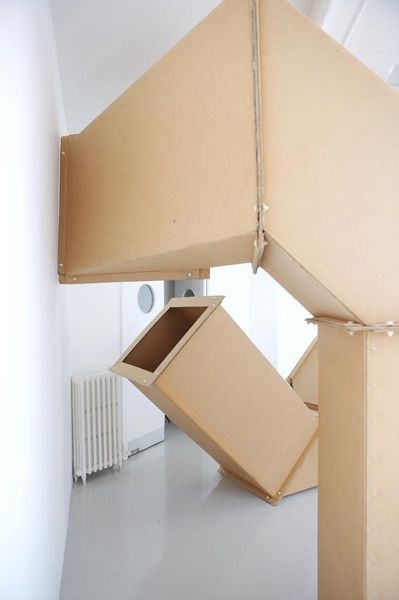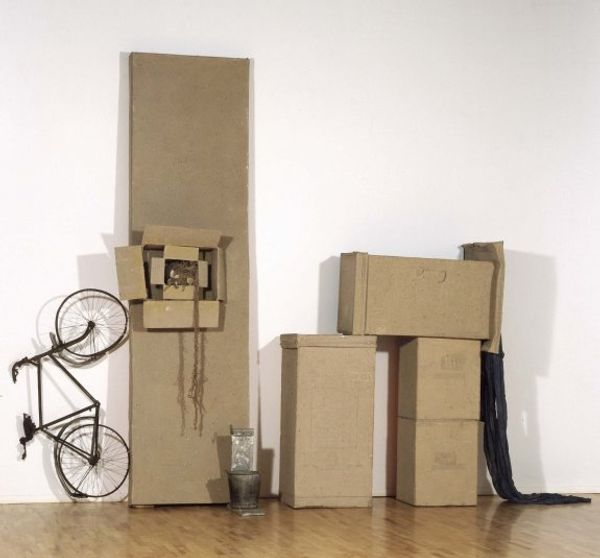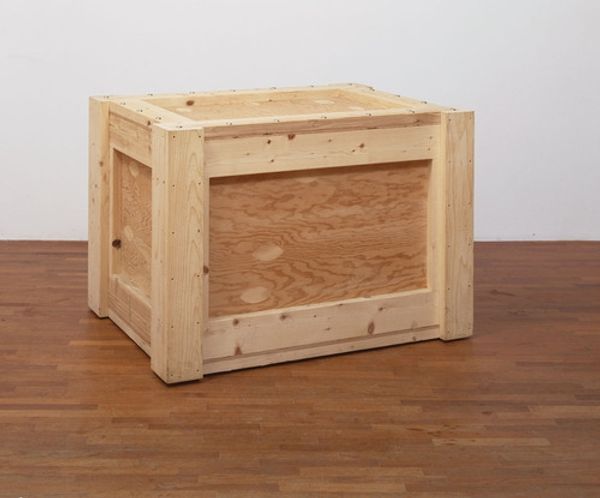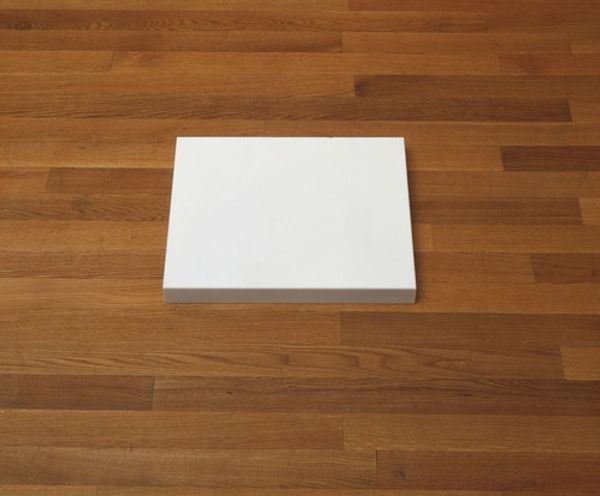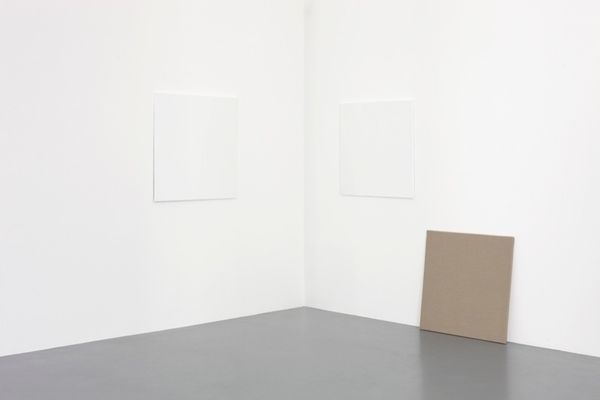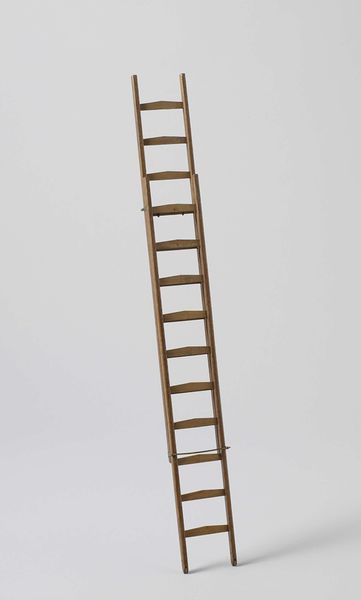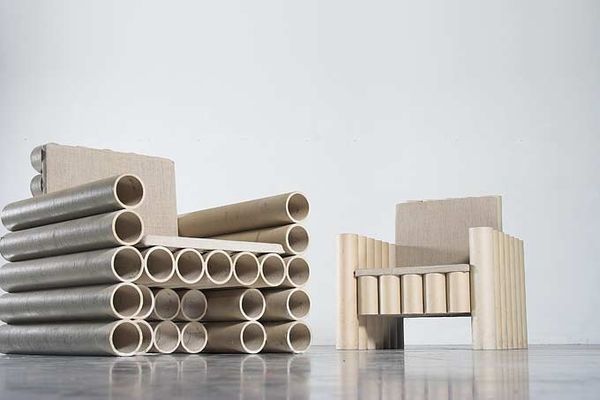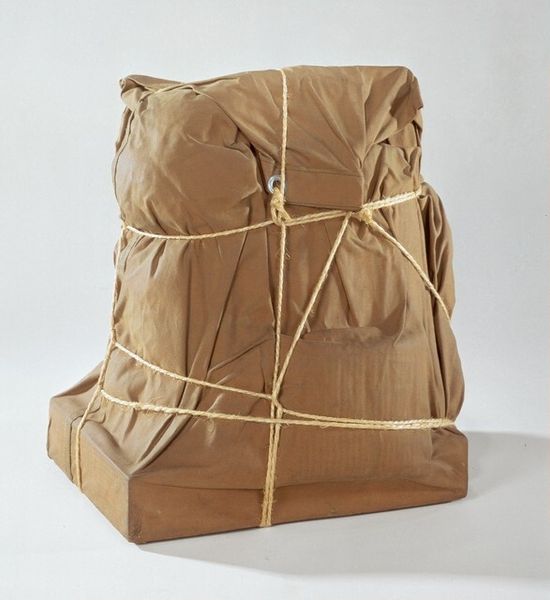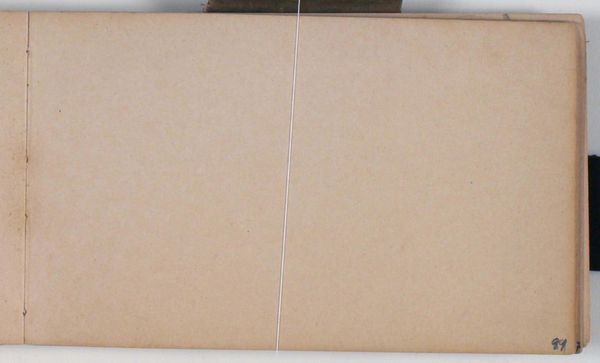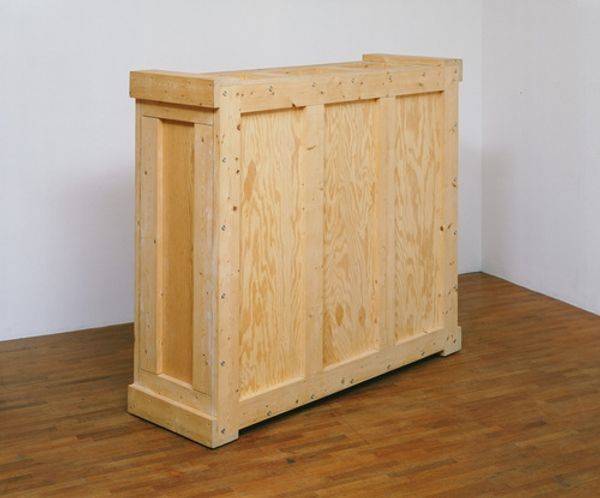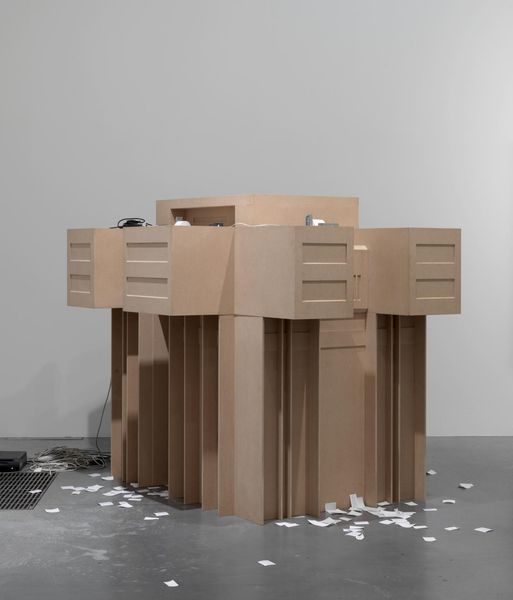
Copyright: Heimo Zobernig,Fair Use
Curator: This is an Untitled mixed-media piece by Heimo Zobernig, created in 1993. At first glance, what springs to mind? Editor: Immediately, a sense of stark simplicity. Two deconstructed cardboard boxes dominate, one prone with flaps open, the other upright, almost architectural, but with a rough-hewn void within. It's very matter-of-fact. Curator: Indeed. Zobernig often employs raw materials, as evidenced here with the cardboard, and integrates strategies characteristic of conceptual art. Observe the geometric shapes, the repetition, and the sheer unadorned form. Do you find resonance with minimalist sculpture? Editor: Absolutely. Though minimalism strove for pristine perfection, this seems intentionally anti-perfectionist. The boxes feel provisional, as if poised for use in a removal or waiting for reuse, mirroring the readymade strategies embraced within postmodernism and even challenging institutional critiques of display. Curator: An insightful point. It disrupts notions of artistic preciousness. By utilizing mundane materials like cardboard, Zobernig questions art’s status, aligning with a broader critique of consumer culture inherent within the era. There's a dialogue occurring with assemblage practices as well, would you say? Editor: Undeniably. The boxes assembled – almost, but not quite, into something functional – toy with the idea of usability, of art inhabiting the realm of everyday objects. Also, to exhibit this indoors creates further social contexts between commodity and waste culture. Curator: It makes one contemplate our expectations of sculpture. We seek refinement, skill, durability. But here, we are given impermanence and a certain awkwardness, no? Editor: Precisely. The boxes prompt considerations of waste, impermanence, and perhaps the often unseen labor involved in artistic processes, creating its own art-world economies. By bringing what is typically relegated to the background or recycling bin into the forefront, he invites reflection. Curator: The play with positive and negative space in the standing box intrigues me further. This opening within its cardboard frame causes one to ask what it allows one to view, not just within the art, but also through it in turn. Editor: Overall, this work, from its time in 1993 through today, truly opens space to reflect on objecthood, materiality and space. I must say, it challenges comfortable ideas within sculpture! Curator: I concur, there is an honesty that remains powerful decades on in this subtle yet disquieting deployment of materials.
Comments
No comments
Be the first to comment and join the conversation on the ultimate creative platform.
